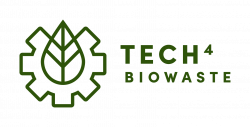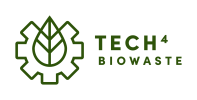Extraction
| Technology | |

| |
| Technology details | |
| Name: | Extraction |
| Category: | Pre-processing (Separation technologies), Post-processing (Separation technologies) |
| Feedstock: | Any freedstock with extractable substances from Food waste and Garden and park waste |
| Product: | Extractable substance |
Extraction is a separation process consisting of the separation of a substance from a matrix. Common examples include liquid-liquid extraction, and solid phase extraction. The term washing may also be used to refer to an extraction in which impurities are extracted from the solvent containing the desired compound.
Feedstock
Origin and composition
Extraction can be used to separate a valuable substance from the feed stream which can be Food waste and Garden and park waste.
Pre-treatment
Various pre-treatments may be utilised. Physical pre-treatments are mainly used to make the extractable substances acessable, e.g. by incresing the surface area of the feedstock (through Sizingand Steam explosion) and/or to release extractable substances e.g. via cell disruption (through Microwave treatment or Ultrasonication).
Process and technologies
Liquid-liquid extraction
In Liquid-liquid extraction two immiscible phases are utilised to separate a desired compound from one phase into the other which is determined by the chemical properties of the compound (the solute) and the chosen solvents. One example for such process is the extraction of organic substances from an aqueous phase into an organic phase. For that the two (organic and aqueous) liquids are mixed to enable substance transfer followed by separating the two liqiuids. The two steps can take place in separate reactors. The solvent has to be chosen in a way that impurities does not dissolve or only dissolve very limited.
Solid-liquid extraction
In solvent-liquid extractions the desired compound is dissolved in an extracting solvent. Thereby the solvent has to be chosen in a way that impurities does not dissolve or only dissolve very limited. The solvent is heated within a reactor utilising the reflux technique. The reflux process includes the steps of dissolution, heating/distillation, condensation, and collection which increases its concentration after each cycle.
Products
Post-treatment
Various post-treatments may be utilised during or after the extraction process which includes:
- Centrifugation
- Crystallisation and precipitation
- Drying
- Field-Flow fractionation (FFF)
- Flocculation
- Ionic liquids
- Membrane filtration
- Microwave treatment
- Sieving
Technology providers
| Company name | Country | Technology subcategory | Technology name | TRL | Capacity [kg/h] | Extractable substance | Feedstock: Food waste | Feedstock: Garden & park waste |
|---|---|---|---|---|---|---|---|---|
| Company 1 | [Country HQ location] | [Technology category (if different sub-categories are defined this has to be specified here, the available categories can be found on each technology page under the chapter Process and technologies)] | [Technology name (the "branded name" or the usual naming from company side)] | [4-9] | [numeric value] | ● | ● | |
| Company 2 | [Country HQ location] | [(if different sub-categories are defined this has to be specified here, the available categories can be found on each technology page under the chapter Process and technologies)] | [Technology name (the "branded name" or the usual naming from company side)] | [4-9] | [numeric value] | ● | ● |
Company 1
| General information | |||
| Company: | 
| ||
| Country: | |||
| Contact: | |||
| Webpage: | |||
| Technology and process details | |||
| Technology name: | Technology category: | Pre-processing (Separation technologies), Post-processing (Separation technologies) | |
| TRL: | Capacity: | kg·h-1 | |
| Extractable substance: | Other: | ||
| Feedstock and product details | |||
| Feedstock: | Product: | ||
Open access pilot and demo facility providers
Patents
Currently no patents have been identified.